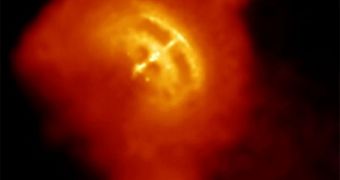Pulsars are neutron stars left behind after a massive supernova explosion. After everything clears, all that remains is the core of the formerly massive star that blew up, which is now shedding neutrons, while spinning very fast around its own axis. They are called pulsars because the jets of radiation they are eliminating can be detected by telescopes on Earth as they swap over us. The process repeats itself several times per second, depending on the speed of the pulsar. But some of these celestial objects have a peculiar trait – they sometimes suddenly speed up, Technology Review reports.
These twitches are called pulsar glitches, and astronomers and astrophysicists still have no idea as to why they happen. What is actually going on, they believe, is that the frequency on which the body emits radiation suddenly increases. This can only mean that the pulsar itself has accelerated its rotation. The reason why this happens is, however, still unexplained. To make matters even more complicated to resolve, these occurrences are very rare, with just 170 instances recorded in 51 of 1,800 such neutron stars, over a period of four decades.
Just recently, a team of experts has announced that these numbers have been upgraded. Scientists at the Urumqi Observatory, in China, led by Jian-Ping Yuan, announce the discovery of 29 additional glitches in 19 pulsars of a relatively young age. For a long time, experts have considered that analyzing these twitches will provide them with a deeper insight into the inner workings of the pulsars, but this has since proven to be a wild assumption. In spite of the major, new study, and the vast amount of data it has provided the international astronomical community with, no clear conclusions could be drawn from the investigation.
What's even more peculiar is that basic physics dictates these neutron stars should decrease their rotation speed over time, as they constantly lose energy via the radiation they emit. But, rather than having the common sense to comply with the predictions, the celestial bodies in fact mock them, by accelerating their spin. Experts have thus far been unable to identify any visible source of energy around the pulsars, which may be feeding them matter or energy. Even more complicated, the Chinese team says, is determining what role other factors play in this issue, such as the rate of glitches, the interval between them, and the time the stars need to revert to their initial rotation after they happen.

 14 DAY TRIAL //
14 DAY TRIAL //